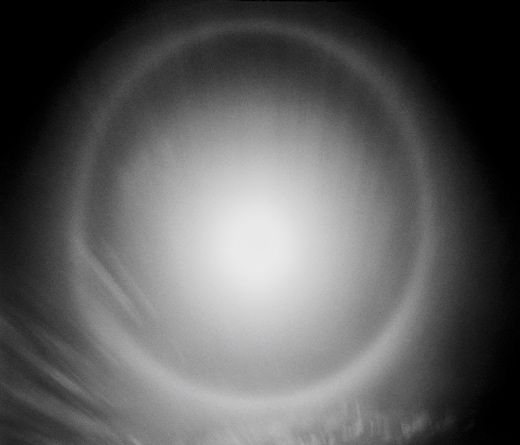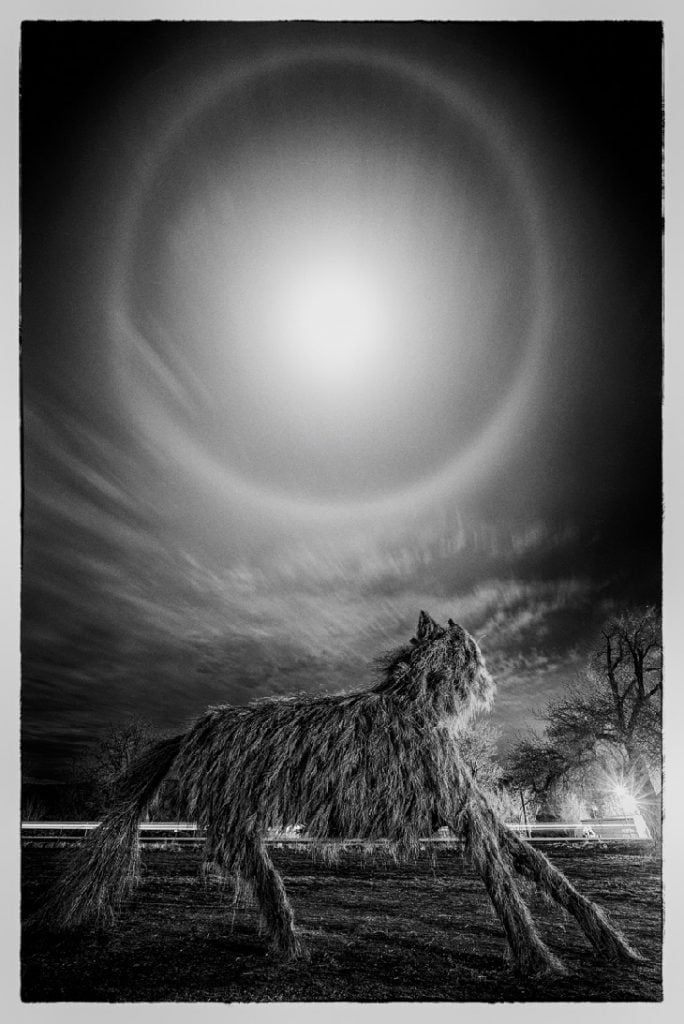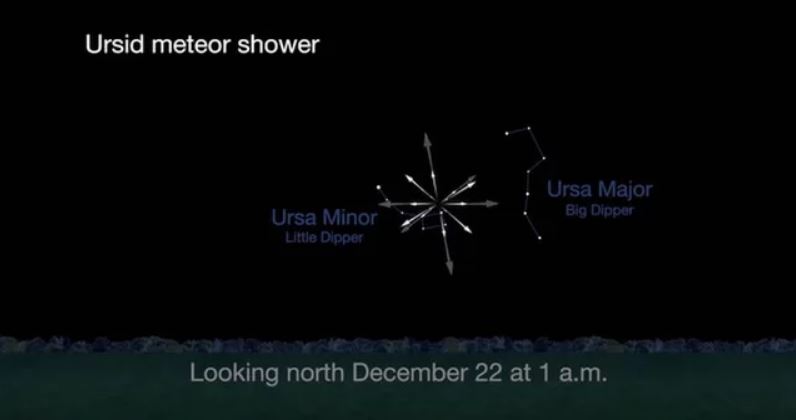
Full Moon, eerie moon halos and Ursid meteor shower: Great cocktail of space weather events on December 22, 2018
By
Strange Sounds
-
Dec 22, 2018
Yesterday, was winter solstice, the shortest day of 2018. Today is a full moon known as the Cold Moon. There’s a northern autumnal chill in the air too. That means it’s time to be alert for icy Moon halos… And depending on your location, you might be able to see the Ursid meteor shower to boot. Paul Martini photographed this eerie moon halo from Bluff, Utah, on December 17, 2018:

Mystical lunar halo appears over Bluff, Utah on December 17, 2018.
Picture taken by Paul Martini on December 17, 2018 @ Bluff, Utah via Spaceweather.com
Bluff is the gateway to Utah’s Bears Ears National Monument and the Valley of the Gods, where wind- and rain-sculpted sandstone formations jut beautifully out of the ground.

The coyote sculpture seen here was set aflame the night of winter solstice, December 21, 2018. Picture taken by Paul Martini on December 17, 2018 @ Bluff, Utah via Spaceweather.com
Moon halos are created by ice crystals in high clouds, which catch rays of moonlight and bend them into a 22-degree ring.
Bright full Moons are great at making these halos – and the next full Moon today. After sunset on December 22, 2018, the Cold Moon will rise in the east, making halos and other atmospheric figures in the night sky.

The Ursid meteor shower 2018
By the way, the annual Ursids meteor shower is expected to peak a day or two after the solstice, so today or tomorrow night. You might be able to see up to 10 “shooting stars” per hour depending on your location. However, the Cold Moon will be so bright that it could outshine some of the meteors as they streak in, making them harder to spot.
Thanks to: http://strangesounds.org






 Sat Mar 23, 2024 11:33 pm by globalturbo
Sat Mar 23, 2024 11:33 pm by globalturbo

